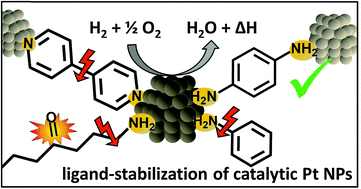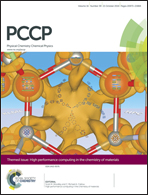Ligand-stabilized Pt nanoparticles (NPs) as novel materials for catalytic gas sensing: influence of the ligand on important catalytic properties†
Abstract
Different mono- and bifunctional amine ligands have been used to stabilize Pt NPs for catalytic H2 gas sensing. Depending on the chemical structure and properties of the ligand, the catalysts show different overall sensor performances, activation periods, and long-term stabilities. These sensor characteristics are put into relation with chemical processes like cleaning of the surface, degradation processes of the ligands and nanoparticle (NP) sintering. It has been found that during activation free adsorption sites are formed primarily due to desorption of synthetic residues. Furthermore, partial desorption of the ligands followed by their degradation may occur. For monoamines the latter process results in destabilization of the NPs followed by catalyst deactivation through particle sintering. The use of bifunctional ligands that link individual NPs shows significantly enhanced stabilities which can be related to the reduction of the ligand desorption rates and degradation. Besides the functionality of the ligands it was observed that the chemical nature of their hydrocarbon skeleton affects the catalyst stability: aromatic substructures remain intact upon H2 oxidation, while alkyl fragments undergo oxidation and decomposition. The advantages of bifunctionality and an aromatic hydrocarbon skeleton can be combined by the use of para-phenylenediamine (PDA) as a linking ligand. Networks formed by this ligand were indeed found to be stable under the applied catalytic conditions for more than 24 h.

- This article is part of the themed collection: Bunsentagung 2014: ‘Physical Chemistry of Nanoparticles’

 Please wait while we load your content...
Please wait while we load your content...